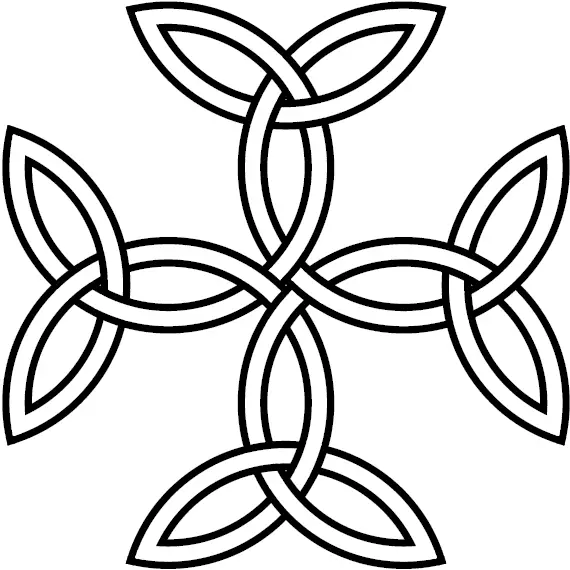The Carolingian cross is a variation of the Christian cross, representing the sacrifice of Jesus Christ. The symbol comes from around the 9th century and is heavily associated with the Carolingian dynasty established by Charles the Great, also known as Charlemagne.
Charlemagne united the Frankish kingdoms and conquered most of modern-day Europe before establishing the Holy Roman Empire and being crowned the first Roman Emperor in almost 400 years by Pope Leo III. He is often referred to as the “father of Europe.”

The cross is a combination of the Christian cross and a Celtic knot motif. This represents a synthesis of Christian and pre-Christian elements reflecting the vast cultural adaptation that took place during the early years of the Holy Roman Empire.
Although it is one of the lesser-known variations of the Christian cross, it appeared in one form or another as early as 813-814 AD. Its earliest depiction seems to be the In Honorem Sanctae Crucis (In Honor of The Sacred Cross) by Hrabanus Maurus.
Popular Interpretations of The Carolingian Cross:
- The Celtic knot motif represents Yggdrasil, the tree of life from Nordic, Slavic, and other European pagan mythologies.
- The Cross shape represents the cross upon which Jesus Christ was crucified, representing the sacrifice that Jesus made to save humanity from sin.
- The synthesis of these two motifs represents the transition of pagan Europe into Christian Europe and the vast cultural changes that took place during the early days of the Holy Roman Empire.
» Amulet
» Ajna
» Arsenic
» Merkaba
» Hung
» Yin Yang
» bindi
» IK Onkar
» Khanda
» Halo
» jiahu
» Tau
» Uraeus
» Menorah
» Quincunx
» Tilaka
» Taijitu
» Vajra
» Chai
» Chi Rho
» Bagua
» Dragon
» Hunab Ku
» Caduceus
» Infinity
» Ichthus
» Hedjet
» Lauburu
» Om
» Ankh
» Chalice
» Pentacle
» Maat
» Ogham
» Mandala
» Kartika
» Khamsa
» Heart
» Labrys
» Sun Face
» Raven
» Triskele
» Scarab
» Dove
» Hanukia
» Anubis
» Trishula
» Durga
» Mezuzah
» Bay Tree
» Geruda
» Kinnara
» Quito
» Condor
» Blue Jay
» Falcon
» Makara
» Rosary
» Uluru
» Apsaras
» Hanuman
» Serpent
» Minotaur
» Mercury
» Apex
» Vestra
» Yoni
» Astarte
» dakini
» Calabash
» Mandrake
» Rebis
» Typhon
» Vegvísir
